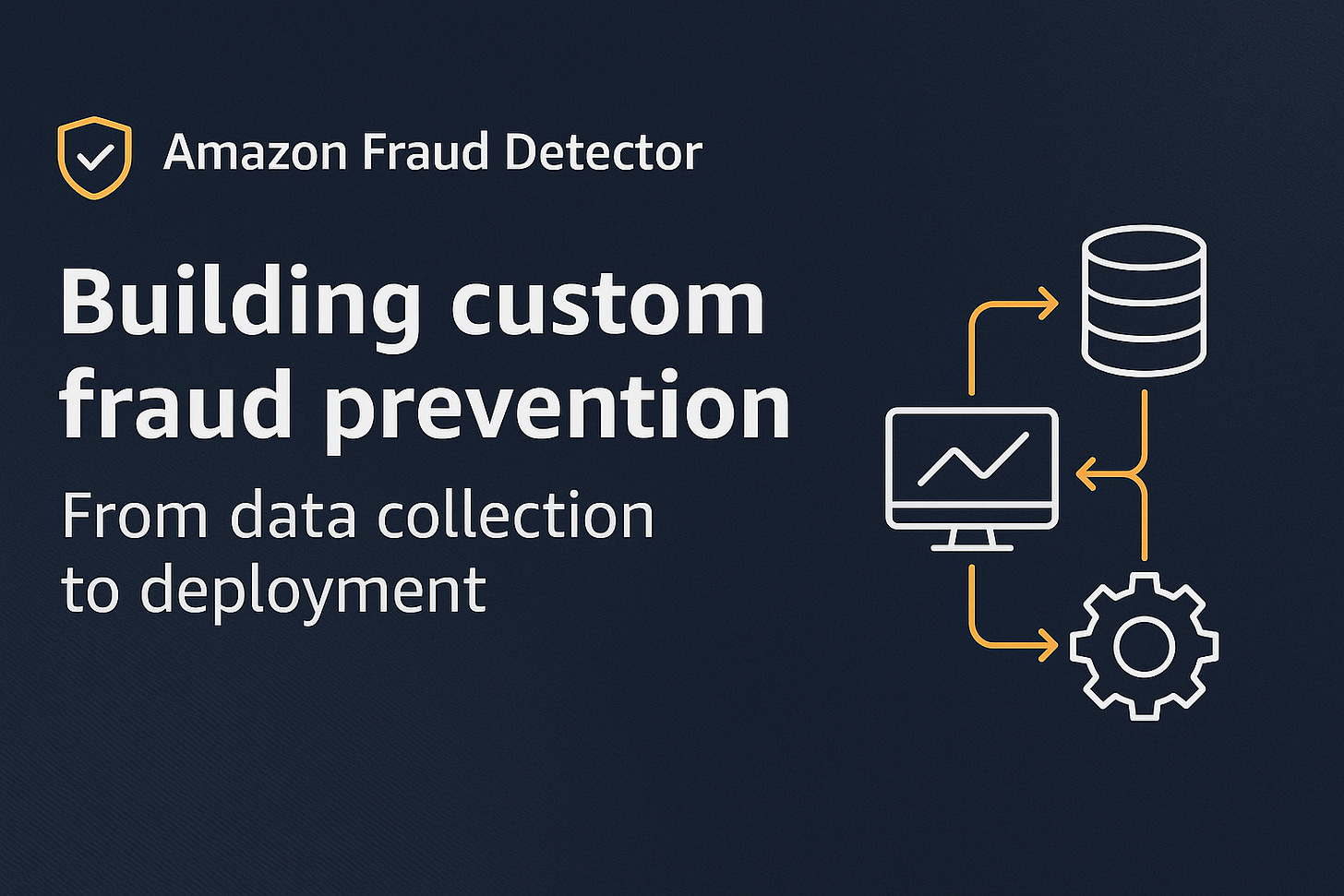🛡️ Amazon Fraud Detector: Building Custom Fraud Prevention – From Data Collection to Deployment
Fraudsters are always evolving, and rule-based systems just don’t cut it anymore. So I rolled up my sleeves and explored Amazon Fraud Detector (AFD) – a fully managed service that lets you build a custom fraud prevention system using ML, with zero ML experience required.
🚨 Why Fraud Detection Matters
If you're seeing any of these, AFD is for you:
Fake signups or fake accounts
Sudden spike in payment failures or chargebacks
Login attempts from unusual geographies
Suspicious behavior in loyalty programs
Abnormal transactions or IPs
🧠 What's Amazon Fraud Detector (AFD)?
A fully managed AWS service that helps you:
Build fraud detection ML models
Deploy them with just clicks
Combine them with rules
Make real-time fraud predictions
No ML expertise required 🎯
🔁 My End-to-End Workflow with AFD
1️⃣ Collect Historical Data
You’ll need at least 10,000+ historical events labeled as FRAUD or LEGIT.
Make sure your dataset includes fields like:
Event ID
Timestamp
Email domain
IP address
Amount
Fraud label
✅ Pro tip: Clean and upload to S3 in CSV format.
2️⃣ Define the Event Type
In the AFD Console, I created an Event Type like:
Name:
signup_eventEntity Type:
userVariables:
ip_addressemail_domainsignup_timedevice_type
This defines what your model will look at when making predictions.
3️⃣ Upload & Validate Data
Upload the CSV to S3
Map the CSV columns to AFD variables
Validate schema and check for missing fields
AFD shows preview and error logs — smooth!
4️⃣ Train the Model (Auto-Magic)
AFD auto-trains a fraud detection model using your labeled data. It handles:
Data splitting
Algorithm selection
Evaluation metrics
Model scoring (0–100 fraud likelihood)
No need to pick an algorithm or tune anything. 🚀
5️⃣ Set Up Real-Time Rules
Here’s what I did:
Defined a rule that checks for high-risk scores
Added conditions like suspicious domains or IPs
Example Rule Logic (translated from table):
IF
model_score > 85OR
email_domain in ["suspicious.com", "freemail.biz"]THEN
outcome = "BLOCK"ELSE
outcome = "ALLOW"
These rules run on top of the model and help in decisions like block/challenge/allow.
6️⃣ Integrate with Real-Time APIs
AFD gives you a prediction endpoint.
I used a Lambda function to trigger it:
response = frauddetector.get_event_prediction( detectorId="signup_detector", eventTypeName="signup_event", eventId="signup_567", eventTimestamp="2025-07-28T12:00:00Z", entities=[{"entityType": "user", "entityId": "user_abc"}], eventVariables={ "ip_address": "198.51.100.1", "email_domain": "freemail.biz" } )The response includes:
fraud score(0–100)triggered rulesfinal outcome(allow/block/etc)
7️⃣ Monitor & Retrain (Important)
Fraud trends evolve — so should your models.
What I monitor:
Rule hit counts
Prediction volumes
Model drift
Performance metrics (AUC, precision/recall)
Retrain the model every 1–3 months with recent data for best results.
🔌 Real-World Use Cases
Instead of a table, here’s a use case breakdown:
E-commerce: Block fake account creation and detect carding attacks
FinTech: Detect loan application or KYC fraud
Gaming: Identify reward farming or bot activity
SaaS: Spot credential stuffing or multi-account abuse
Retail Loyalty: Catch point fraud or abuse of referral programs
💡 Why I Recommend AFD
⚡ Real-time decisions under 300ms
🧠 Combines ML and rules – best of both worlds
🛠️ Integrates with Lambda, API Gateway, Step Functions
🔁 Supports versioning and retraining
💰 Usage-based pricing (no upfront model costs)
🧩 What I Used to Build This
Here’s my quick infra stack:
Amazon S3 – Store historical training data
Amazon Fraud Detector Console – Model & rules
AWS Lambda – Prediction handler
API Gateway – Expose prediction as HTTP endpoint
CloudWatch – Logs and metrics
Terraform (optional) – IaC to repeat this setup
💬 Final Thoughts
AFD makes fraud prevention simple and powerful — ideal for startups, SaaS platforms, and payment providers who want ML-level intelligence without an ML team.


